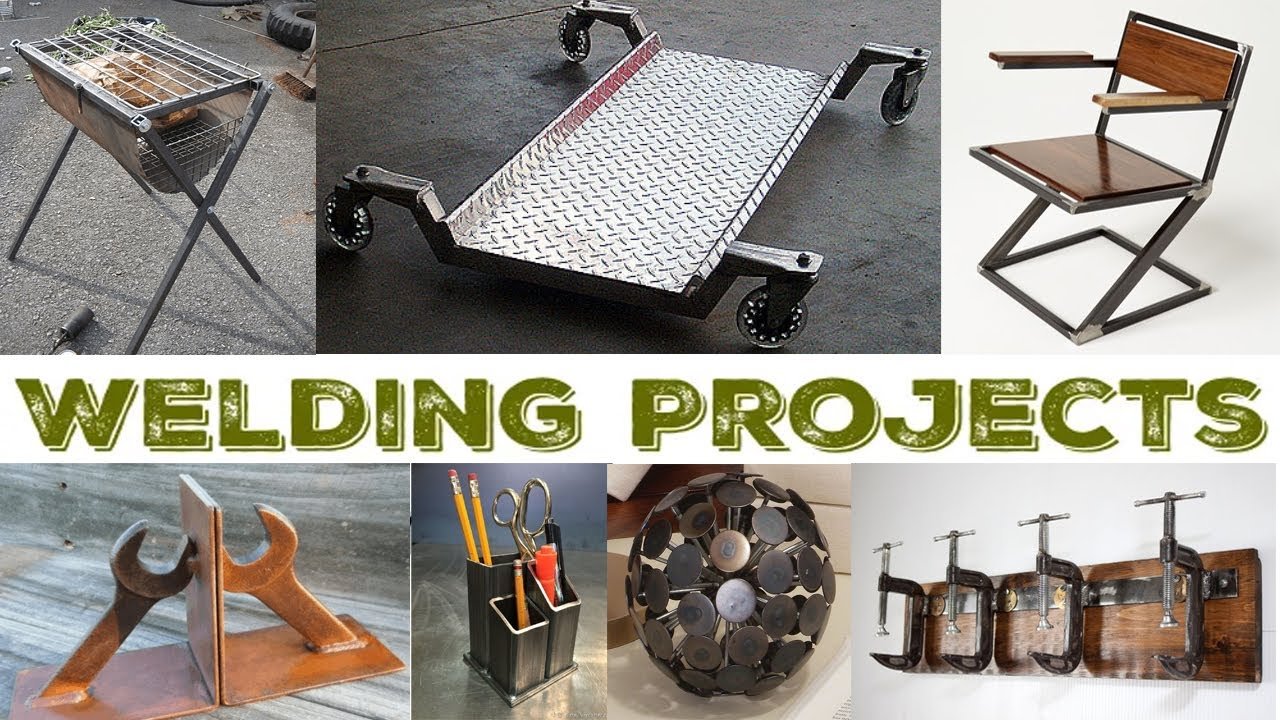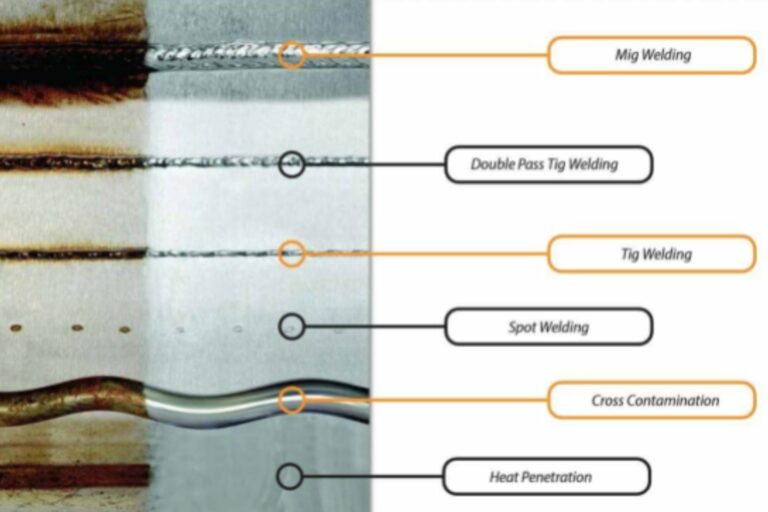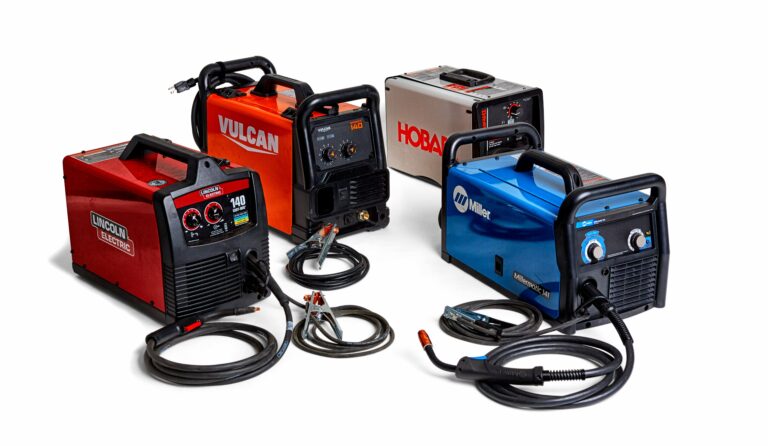Expert Tips For Home Welding Projects: Diy Made Easy!
Looking for exciting ways to enhance your home? Why not consider diving into the world of home welding projects? From creating unique metal sculptures to building your own furniture, welding opens up a world of possibilities for the DIY enthusiast. Not only can it add a personal touch to your home decor, but it also allows you to unleash your creativity and showcase your skills. Whether you’re a seasoned pro or just starting out, home welding projects offer a fun and fulfilling way to put your skills to the test. So grab your welding gear and let’s explore the exciting world of home welding projects together!
Home Welding Projects: Unleash Your Creativity and Skills
Welding is a versatile and practical skill that can be used to create a wide range of projects. Whether you’re a seasoned welder or just starting out, home welding projects can provide a fulfilling and creative outlet for your skills. From furniture and decor to practical household items, the possibilities are endless. In this comprehensive guide, we will explore various home welding projects that you can undertake, providing step-by-step instructions and tips along the way.
Section 1: Welding Safety Precautions
Safety should always be the top priority when engaging in any welding project. Before you start your home welding projects, it’s essential to familiarize yourself with the necessary safety precautions. Here are some key safety measures to follow:
Wear Protective Gear
- Always wear a welding helmet with a proper shade to protect your eyes from harmful radiation.
- Use welding gloves to protect your hands and forearms from sparks and heat.
- Wear flame-resistant clothing, including a welding jacket and pants, to shield your body from potential burns.
- Invest in high-quality welding boots to protect your feet from falling objects and sparks.
Ensure Proper Ventilation
- Work in a well-ventilated area to prevent the accumulation of toxic fumes and gases.
- If working indoors, use a fume extraction system or a welding curtain to maintain proper ventilation.
Prepare Your Workspace
- Clear your work area of any flammable materials or substances that could pose a fire hazard.
- Ensure that your welding table or workbench is sturdy and stable.
- Have a fire extinguisher nearby.
Protect Your Skin from UV Radiation
- Apply a broad-spectrum sunscreen with a high SPF to exposed areas of your skin.
- Consider using a welding blanket or welding curtains to shield yourself from UV radiation if working in close proximity to the welding arc.
Section 2: Welding Projects for the Home
Now that we’ve covered the safety precautions, let’s dive into some exciting and practical home welding projects that you can tackle. These projects range from beginner-friendly to more advanced, allowing you to choose ones that match your skill level and interests.
1. Welded Metal Sculptures
Create stunning pieces of art by welding together various metal components. Let your imagination run wild as you experiment with different shapes, sizes, and finishes. You can create sculptures for your garden, living room, or even as gifts for friends and family.
2. Custom Metal Furniture
Why settle for generic furniture when you can design and build your own custom pieces? Welding allows you to create unique tables, chairs, and shelves that reflect your personal style. Experiment with different metals, finishes, and upholstery to bring your vision to life.
3. Decorative Metal Wall Art
Add a touch of elegance and personality to your home with decorative metal wall art. From intricate designs to abstract patterns, you can create eye-catching pieces that serve as focal points in any room. Experiment with various welding techniques and finishes to achieve the desired effect.
4. Outdoor Fire Pit
Enhance your outdoor living space by building a custom fire pit. Welding allows you to create a durable and stylish fire pit that can withstand the elements. Whether you prefer a classic or modern design, the possibilities are endless.
5. Metal Wine Rack
Display your wine collection in style with a custom metal wine rack. Weld together metal rods or bars to create a minimalist, industrial-inspired wine storage solution. Add a coat of paint or choose a brushed metal finish to complement your home decor.
6. Garden Trellis
Bring charm and functionality to your garden by building a metal garden trellis. Weld together metal rods to create a sturdy framework for climbing plants. Customize the design to match your garden aesthetics and create a focal point in your outdoor space.
7. Metal Bookends
Keep your book collection organized and stylish with custom metal bookends. Weld together metal plates or shapes to create unique bookends that reflect your interests and personality. Experiment with different finishes or add decorative elements for a personalized touch.
8. Welded Picture Frames
Add a modern and industrial touch to your favorite photos with welded metal picture frames. Experiment with different welding techniques and metals to create frames that complement the content and style of your photographs. You can also customize the size and shape to fit your desired display.
9. Bike Rack
Organize your bicycles with a customized metal bike rack. Weld together metal tubes or rods to create a sturdy and space-saving storage solution. Paint or powder coat the rack to match your garage or outdoor space.
10. Metal Planters
Elevate your gardening game with custom metal planters. Weld together metal sheets or plates to create unique and durable planters for your indoor or outdoor plants. Experiment with different sizes and shapes to add visual interest to your greenery.
Section 3: Building Your Welding Skills
To fully enjoy and excel in your home welding projects, it’s crucial to continually improve your welding skills. Here are some tips for building your welding prowess:
1. Take Welding Classes or Workshops
Consider enrolling in welding classes or workshops offered by local trade schools or community colleges. These classes can provide hands-on instruction, guidance, and valuable feedback to help you refine your welding techniques.
2. Practice Regularly
Consistent practice is key to improving any skill, and welding is no exception. Dedicate regular time to practice different welding techniques, experiment with various metals, and challenge yourself with new projects.
3. Learn from Experienced Welders
Connect with experienced welders in your community or online forums to learn from their experiences and gain insights. Their guidance can help you avoid common mistakes and discover new welding techniques or project ideas.
4. Stay Updated with Welding Techniques
Welding is a constantly evolving field, with new techniques and equipment being introduced regularly. Stay informed by reading industry publications, watching video tutorials, and attending trade shows or conferences.
5. Invest in Quality Equipment
While it’s possible to start with basic welding equipment, investing in higher-quality tools and machines can significantly improve your welding experience and the quality of your projects. Choose equipment that suits your specific needs and budget.
Home welding projects offer a perfect opportunity to unleash your creativity and put your welding skills to good use. Whether you’re a beginner or an experienced welder, there’s a wide range of projects waiting for you to explore. By following safety precautions, choosing projects that match your skill level, and continuously improving your welding abilities, you can create beautiful and functional pieces that will enhance your home for years to come. So, grab your welding gear, ignite your imagination, and let the sparks fly as you embark on exciting home welding projects.
4 Easy Welding Projects – Beginner Welding Series
Frequently Asked Questions
What safety precautions should I take before starting a home welding project?
Prior to starting any home welding project, it is crucial to take safety precautions to protect yourself and others. Ensure you have the appropriate safety gear, including a welding helmet, gloves, and protective clothing. Work in a well-ventilated area or use a fume extractor to avoid inhaling toxic fumes. Clear the workspace of any flammable materials and have a fire extinguisher nearby. Finally, familiarize yourself with the equipment and follow the manufacturer’s instructions carefully.
What types of welding processes can be used for home welding projects?
There are several welding processes suitable for home welding projects, including the most common ones like shielded metal arc welding (SMAW), also known as stick welding, and metal inert gas welding (MIG). Tungsten inert gas welding (TIG) is also popular for more precise and delicate work. The choice of welding process depends on the material being welded, thickness, and project requirements. It is important to research and select the appropriate welding process for your specific project to achieve optimal results.
What materials can I weld with a home welding setup?
A home welding setup can handle various materials, such as mild steel, stainless steel, and aluminum. Mild steel is a common choice for many DIY welding projects due to its affordability and versatility. Stainless steel provides excellent corrosion resistance, making it suitable for outdoor or marine applications. Aluminum is lightweight and commonly used for projects involving automotive or aerospace applications. However, different welding processes and techniques may be required to weld each material effectively.
How can I prepare the metal surfaces for welding?
Properly preparing the metal surfaces is essential for achieving strong and clean welds. Begin by cleaning the metal surfaces to remove any dirt, rust, or paint, using a wire brush or grinder. This helps ensure good electrical contact and removes contaminants that could weaken the weld. Before welding, it is also advisable to bevel the edges of the metal pieces to create better penetration and fusion. Additionally, using a degreaser or solvent to remove any oil or grease will further enhance the quality of the weld.
What are some common welding mistakes to avoid in home welding projects?
When undertaking home welding projects, it is important to be mindful of common mistakes that can compromise the quality and safety of your welds. One common mistake is improper welding technique, such as moving too quickly or too slowly, which can result in weak welds. Another mistake is not sufficiently cleaning the surfaces before welding, leading to contaminations and poor fusion. Additionally, inadequate heat control or incorrect selection of welding parameters can also affect the quality of the weld. It is essential to practice proper technique, follow safety guidelines, and learn from experienced welders to avoid these mistakes.
Final Thoughts
In conclusion, home welding projects offer a unique opportunity for individuals to explore their creativity and enhance their skills in a practical and hands-on manner. By engaging in such projects, homeowners can bring their ideas to life and create customized pieces that reflect their personal style. From constructing furniture to repairing equipment, home welding projects enable individuals to save money, develop new abilities, and gain a sense of accomplishment. Whether it is for practical purposes or as a hobby, home welding projects can be both fulfilling and rewarding, allowing individuals to leave their mark on their living spaces. So, start exploring the world of home welding projects today and unleash your inner artisan.


